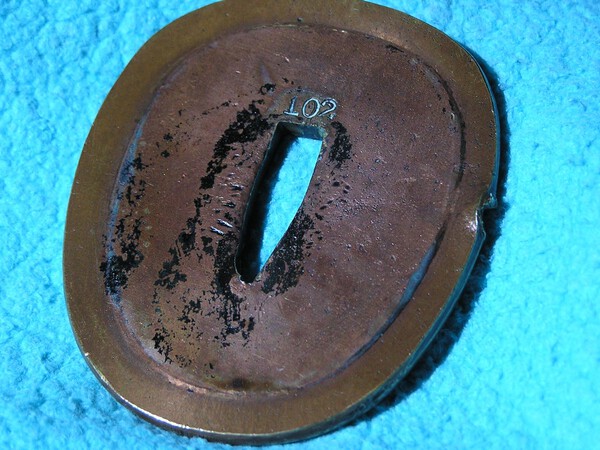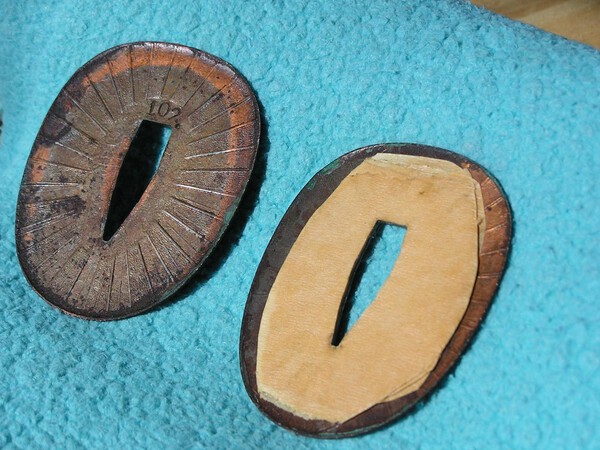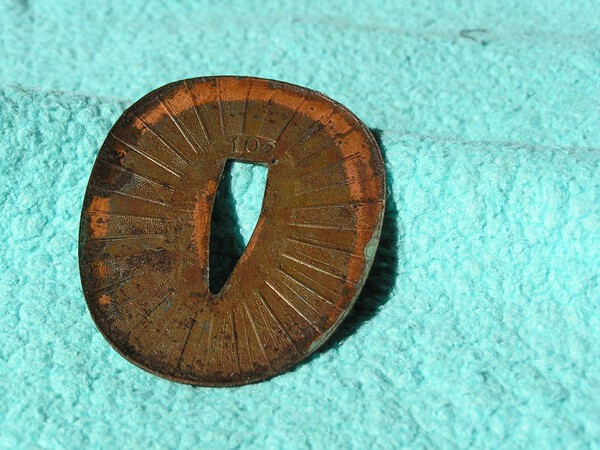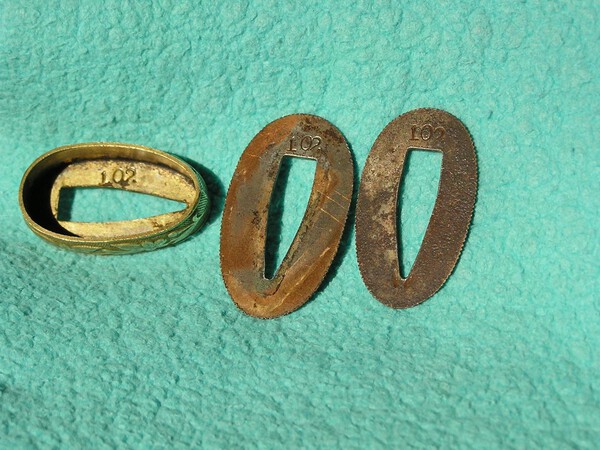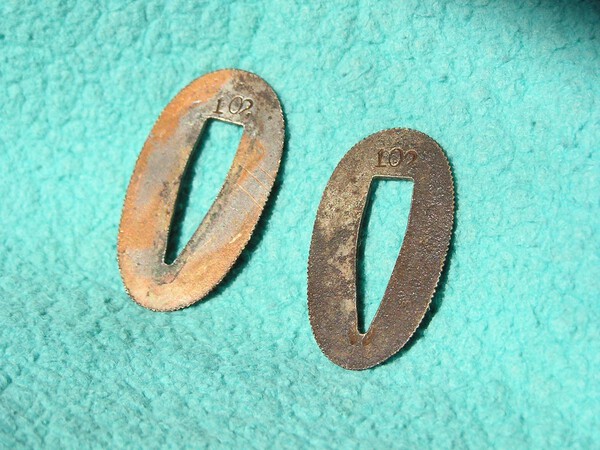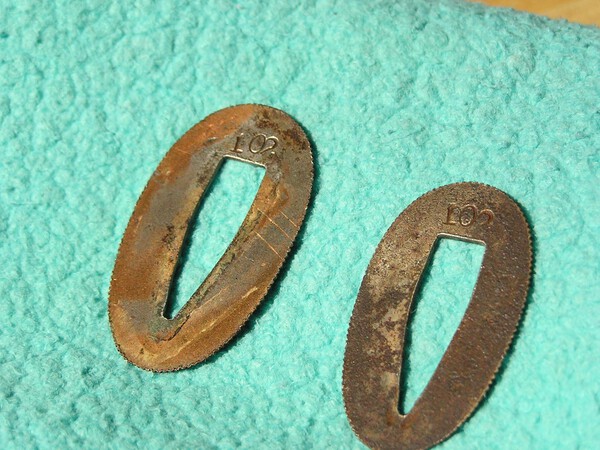-
Posts
256 -
Joined
-
Last visited
Content Type
Profiles
Forums
Events
Store
Downloads
Gallery
Everything posted by Austus
-

Tsuka of tanto restoration
Austus replied to Artur DrogaMiecza's topic in General Nihonto Related Discussion
Nice work, good pictures. The closeups of the same was educational versus celluliod used in some guntos. More in-process photos would be enlightening. Please. But the one you posted in August was stunning! Looking forward to future projects. Thanks for sharing. -
You're doing some important work, here, Bruce. Asking the right questions and leveraging the worldwide nature of this forum can add great knowledge and clear up much confusion. A good example of that is the NLF thread. Good stuff!
-
Sounds like the one that Neil has is a bargain; and he only handles the best of specimens, judging from his posts. Wouldn't be bad to have a stainless blade, too! Please tell us what happens in this quest. Good Luck.
-
The very last photo sure looks like my Kai Gunto Incognito! The Oseppas appear to be steel, and the tsuba looks to be plated. It also is missing the middle seppas, which Neil pointed out as pure Navy. Maybe those steel seppas aren't so rare after all. Late war, or mixed post-war? Buy them both, if you can afford it!
-
Could you expand a little bit on the alcohol and microfiber treatments mentioned? Like, are they particularly good or bad?
-
It seems that the above posted sword has answered many questions about my unusual Kai Gunto. It probably should be featured in a thread of its own, as a possible late-war survivor like no other. Those steel fittings would not have lasted long; which is probably why mine were plated. Once again, I thank all who shared with and viewed this thread. It has been educational and fun! But now I think we have: Kai Gunto… Finito
-
Thanks, Steve and Tom; I bet one of you is right! No way of knowing if that's the reason for the loss and/or replacement of the habaki and saya; but that's what I think. The sword that David posted may provide the closest thing to an answer that we might get. I'm hoping that someone else can come up with some of those steel fittings before finally giving up. Will sum up the evidence soon, one way or the other!
-
Thank You, Gentlemen. It's an Honor and pleasure to be among you. Thanks, Peter, I think. Took you up on the request and posted some things on the Iz.
-
Is it too late to introduce myself? My name is Austus; and I caught Sword Fever about 6 years ago. Apparently, there is no cure. I'm 66, my Degree was in Finance, and my other passions include Martial Arts, Indian Artifacts, sculpture/carving, and the female form. After 27 years as an active martial artist (my Black Belt is in Kajukenbo), my original interest in swords was the weapons aspects. Then their construction and history. But now I want to go deeper, and there's so much to learn about Japanese swords! This wonderful site has everything a sword lover could hope for, all in one place. Sure wish I'd found it sooner.
-
That's a very exciting development, David. I'll hold my questions; but can not wait to hear more about that sword. And see lots of pictures?
-
Both you and JP and many others here are way too modest. I'm now one of very many that respect and admire you "enthusiasts." And by the way, I should have capitalized "Scholar."
-
From "The Craft of the Japanese Sword" by Kapp & Yoshihara, page 50: "(Terutaka) Kawabata (of the NBTHK) has even gone so far as to compare blades from different eras in a cutting test. For a week he used three blades to cut bundles of bamboo and straw. The Koto blade from the Muromachi Period warped. The Shinto blade chipped.The Gendaito blade...cut well and sustained no damage at all." How else are we going to know?
-
Sounds like that book will make a good addition to my library. Have bought just about every other book on Japanese swords that I could find. And yet, I have learned quite a bit from this site in a short time, even in areas that were specific to my personal interests. Plus, there are scholars like you in every corner that are happy to share their vast knowledge. This site is amazing!
-

Poll by request. Your first sword era?
Austus replied to Brian's topic in General Nihonto Related Discussion
Showato. Type 32 ko. Knew it was a real sword; but didn't think it was Japanese. Was pleasantly surprised to find out that it was a 100 year old cavalry sword. It was rusty on the outside; the blade was mint. But they have this zig-zag edge that looked weird. When I asked a local knife dealer if he could sharpen it, fortunately he said No. Scuffed it with a sock, putting oil on it. Have learned a lot since then. Good thing my first sword was not a Nihonto. -
While I agree with practically every word written in this thread, there is a BUT: How are we going to know which sword period or school or steel type WORKS the best, to cut? If it can't be tested, we'll never know if tamahagane is better than Yasuki or steel rails or modern spring steel; or which method of manufacture produces the best results. Then there's the geometrics involved in creating the best edge. Who better than practicing professional cutters to test blades in long-term use? There are going to be some people who do this anyway; we should at least keep track of which of those blades perform best. Perhaps a few blades could be sacrificed to further our knowledge. I'd love to know how 20th century blades stand up to their predecessors. I bet a whole lot of those partly-traditional blades would do just fine. Gendaitos might be just as good or better than many swords carried in the past. Maybe oil tempering was not a bad tradeoff. Maybe today's spring steel can out-perform previous steels. We'll never know without some kind of testing. Is there a way to post this anonymously?
-
Thanks, Dave, I clicked on that and it is tempting. Had considered buying that book before (I have 3 damaged tsukas); but read that it does not teach how to do any wrapping. If you are recommending this book, I will buy it. Looks like it could be enlightening. And clearly, I have a lot to learn on this subject. Whenever I look at the damage on swords in my meager collection; I realize that if they hadn't been damaged, I would never had had the opportunity to purchase them, they would have already been gone. And if it's "honest damage," sometimes that adds to the aura. I'm all about the blade. As long as it is sound, I can handle the rest. But when I see some of the wonderful examples found on these pages... I'm glad they're in the right hands.
-
Thanks, David, for the photos. Another nice specimen for comparison. And now I know the difference. That sounds like a very interesting job you have. How much do you have to pay to work there? Well, I didn't get many definitive answers as to why my sword is so unusual; but it sure was educational and fun trying! At least now I know what a good Kai Gunto SHOULD look like. There's much more variety than expected. THANK YOU to all the respondents for their time and expertise, and for sharing their beautiful specimens!
-
Thank You, John. You definitely got the Knowledge! Thanks for showing us that blade, too. What a beauty.
-
I got a good laugh out of that one! I grew up catching snakes, and that is one pitiful snakeskin. You gotta think that any soldier carrying that sword knew the war was already lost.
-
Guess that's why all of Neil's looked like that. Gorgeous specimens, there. Thanks for sharing them, John. Sure would like to see the blades, too! Seems like the twisted ito would hold up and perform better. So I'm surprised that the untwisted is preferred. But glad to know it.
-
Thank you, Bruce. Sharkskin is flatter and more like snakeskin? I've seen it, yeah. So is this rayskin an indicator that the sword - or at least the tsuka - is earlier? I'm still confused on the age. With the seppa situation, I was beginning to think that the sword was late war; but the lack of stamps has always been an issue. Now I'm looking at the tsuka and wondering where that leaves the sword if it was the replacement part at some point. Without the original saya, that could stay a mystery. There's still a big elephant in the room: the UN-sharpened blade. Has anyone ever heard of a katana that wasn't sharp except at the point?
-
Thanks for the clarification, David. How strange, statistically, that you were 7 for 7 with twisted ito; and Neil was 7 for 7 with non-twisted ito. What are those odds?? I'm being a bit facetious when buddying up to those Minatogawa swords. No way is this in that class, even though there are some quality parts here. Come to think of it, they're all on the tsuka. You did just point to something I haven't considered: what's under the ito. That's sharkskin on mine, right? If so, that helps place it earlier rather than later. The lack of stamps was the main reason I thought it was early, since the blade doesn't look traditional. The evidence is contradictory yet entwined. What a weird sword. Just curious... who's "We"? Sounds like you sell swords for work. Are you listed in the commercial menus? Don't reply if it's a problem.
-
Sure, Bruce, I'm happy to share. Hope these pictures are good enough; I don't do macro. Any thoughts would be appreciated. I took the opportunity to compare these with Neil's, and got mixed results. My sword does not have any of those mid-sized seppas, and they look pretty cool. I think my little seppas look the same, though. The main thing I was looking at, was if the stamped numbers were consistent. I'm satisfied with them. What do you think?
-
Umm... maybe. Those were about as good as i can do; and I hve only removed the tsuka twice in two years. The numbers show up fairly well. I can see the 102 on the fuchi in the second set of photos. Let me add that there was some green corrosion on the (now) blacker spots on the tsuba and seppas; and when I lightly cleaned them with baking soda, the blackening below was left. Before I disassemble it again, could you let me in on what your theory might be? I definitely respect your opinions; and am curious.
-
Too bad you didn't buy it, David. That is a nice sword! I noticed that it also has twisted ito like mine; whereas all of the ones that Neil posted were not. His are all obviously top quality, though. I still think my tsuka looks a lot like the Minatogawa sword in Dawson's book. Haven't noticed another with the same characteristics, yet. There's gotta be more steel seppas out there on Kai Guntos!




